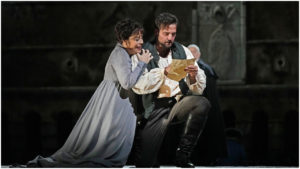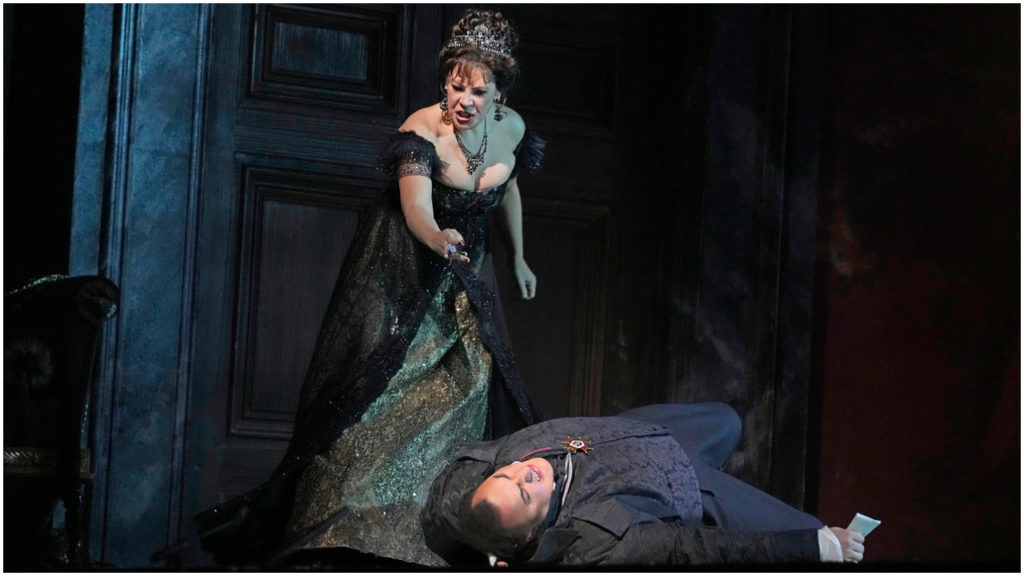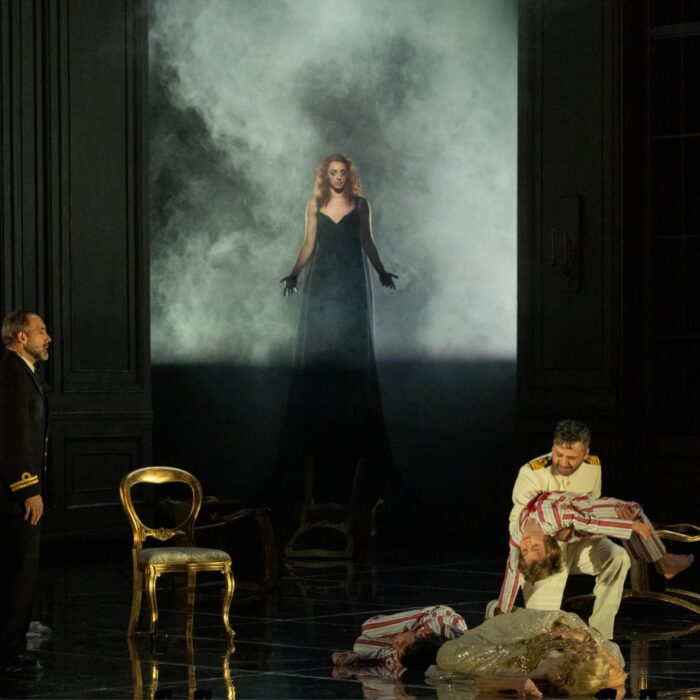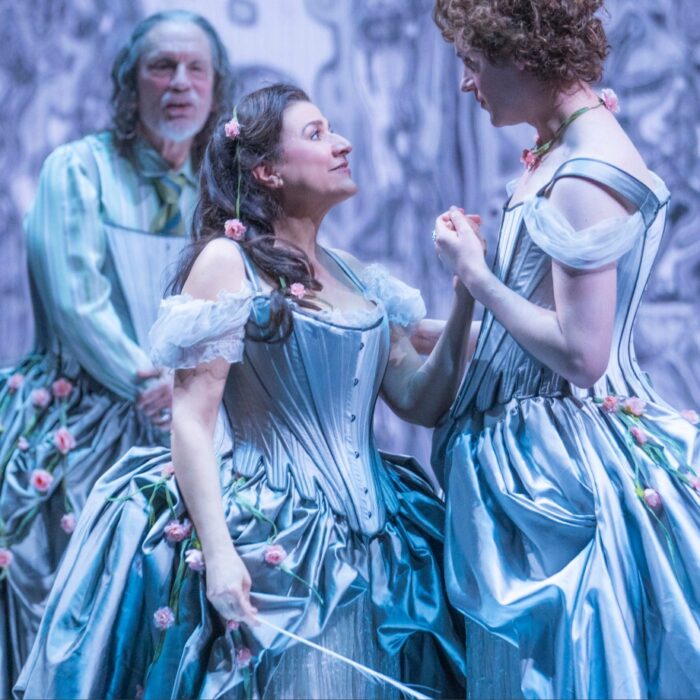
Metropolitan Opera 2021-22 Review: Tosca
Brian Jagde and Sondra Radvanovsky Deliver Show-Stopping Performances
By Logan MartellOn Dec. 2, 2021, the Metropolitan Opera opened this season’s run of Puccini’s “Tosca” with Sir. David McVicar’s production remaining a breathtaking immersion into the unfolding drama, faithfully capturing the Italian setting in a way that celebrates the work’s verismo nature.
Under the baton of Maestro Yannick Nézet-Séguin, the evening’s cast was comprised of highly-experienced artists who brought their gifts to bear before a nearly-full house.
Superb Leads
In the role of Cavaradossi, Brian Jagde was in excellent form throughout, cutting a fine balance between strength and sensitivity. His aria “Recondita Armonia” opened with cooler, hearty tones before his mention of the unknown woman brought both energy and great affection. These qualities carried into a soaring B-flat conclusion that was both passionate and precise. Jagde’s ardent vocality was not limited to just the love scenes, as heard in such dramatic moments as when he swears to help Angelotti, and in his confrontations and eventual torture at the hands of Scarpia. His Act three aria “E lucevan le stelle,” was a poignant and reflective journey through sweeter memories, with Jagde’s crushed bearing reflected in his uneasy steps as he brought himself across the stage for a kneeling, forte conclusion which drew tremendous applause.
In the title role, Sondra Radvanovsky brought a wealth of interpretive experience as well as gorgeous execution. The quick jealousies of her opening lines soon melted into a playful charm before her duets with Jagde “Non la spiri, la nostra casetta,” and “Qual’occhio.” Soon after, when beguiled by Scarpia, Tosca’s pain heard lovely expression through Radvanovsky’s outraged, biting tones and crisply-rolled consonants. Her Act two scene with the baron carried with delectable agony as his threats and advances continually bore down upon the diva, with Radvanovsky’s rendition of “Vissi d’arte” being as sonorous as it was heart-wrenching. This dramatic showcase was met with show-stopping and deserved applause.
Together, Jagde and Radvanovsky displayed great chemistry through their interactions, as they flirted, bickered, embraced, and followed one another about the stage, all the while retaining the support which let them be heard effortlessly. This chemistry sweetly underscored moments of tenderness that punctuate the later drama, such as when they reunite amidst Cavaradossi’s torture, and when they believe they are about to escape in Act three. We saw the brief return of levity and flirtation as Tosca instructs him on the supposedly-fake execution, setting up the impending tragic turn.

An Imposing Scarpia
The role of Scarpia that evening was played by George Gagnidze, covering for Evgeny Nikitin. From his entrance amidst the churchgoers he struck an imposing figure, swiftly questioning the sacristan while backed by croaking bassoons, before coldly turning his sights on Tosca. This false affection was not heard so much vocally, but was seen through Gagnidze’s gestures and bearing; as he set Tosca off to find Cavaradossi, he began to reveal his possessive side as he hugged her, kissed her hand, then clutched at her scarf before finally letting her go. This emerging malice was explored in greater detail in his rendition of the “Te Deum,” which ran the gamut from hushed scheming to a sinister outpouring as the chorus gathered and built a vocal and visible camouflage.
His lines rang rich with hostility as he opened Act two with “Ha piu forte sapore,” in fine contrast with the relaxed and stately feel of the orchestra as Scarpia laid out his desires. While he held the power through most of the act, he made nice use of oilier tones as he propositioned Tosca, and his aggression built towards his fatal stabbing.
While their time on stage was brief, Kevin Short and Patrick Carfizzi did much to establish the tone of the work as Angelotti and the Sacristan, respectively. Short’s urgent bass made a fitting compliment for the orchestra’s urgent, opening measures, and was highly effective in drawing Jagde’s Cavaradossi towards action in the unfolding plot. Carfizzi’s Sacristan provided levity through his pattery lines which eased into a more pious feeling as he recited the angelus.
Maestro Nézet-Séguin drew tremendous nuance through the constantly shifting musical and dramatic atmosphere, exploring moments of relative calm without losing the charge that propels the music, and the actors, through the work.
Thursday’s performance had much to enjoy between the captivating artists and authentic staging, and the audience made that all the more clear through its great showing of support. Audiences will not want to miss the pairing of Jagde and Radvanovsky through their December run of performances.



